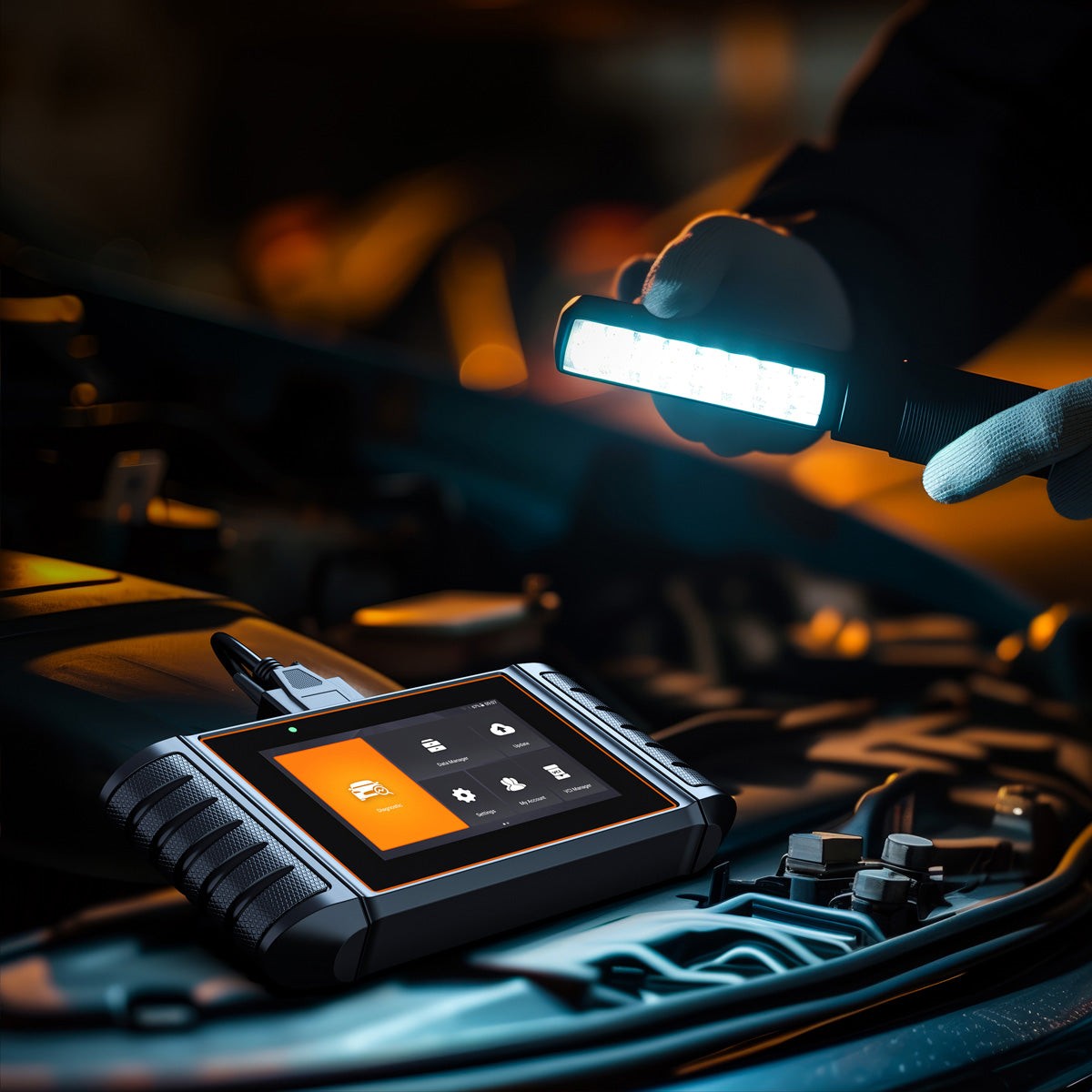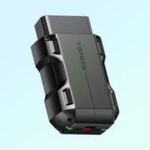Using an Obd2 Scanner To Clear Codes is crucial for maintaining your vehicle’s health and diagnosing potential problems. When your “Check Engine” light illuminates, it signifies that the onboard diagnostic system (OBD2) has detected an issue. An OBD2 scanner allows you to read, understand, and clear these codes. This guide will provide a comprehensive overview of using an OBD2 scanner to clear codes, from understanding code types to troubleshooting common issues.
Understanding OBD2 Codes
OBD2 is a standardized system in vehicles for self-diagnosis and reporting. When a problem occurs, the system stores a diagnostic trouble code (DTC), triggering the Check Engine light.
Types of OBD2 Codes
OBD2 codes are broadly categorized as generic and manufacturer-specific. Generic codes (starting with “P0”) apply to all vehicles, while manufacturer-specific codes (starting with “P1”) are unique to certain brands or models.
Common Causes of OBD2 Codes
Numerous issues can trigger OBD2 codes, ranging from minor problems like a loose gas cap to significant mechanical failures like a faulty catalytic converter. Common causes include:
- Defective sensors (e.g., oxygen sensor, mass airflow sensor)
- Loose or damaged gas cap
- Malfunctioning catalytic converter
- Ignition system problems
- Emission control system issues
Why Use an OBD2 Scanner to Clear Codes?
Clearing codes with an OBD2 scanner to clear codes offers several benefits:
- Resetting the System: Clearing codes allows the system to recalibrate and potentially resolve temporary glitches.
- Diagnosing Intermittent Problems: Clearing codes provides a clean slate to identify recurring issues.
- Passing Emissions Tests: A Check Engine light due to unresolved codes can result in a failed emissions test.
- Improving Vehicle Performance: Addressing underlying issues and clearing codes can enhance engine efficiency, power, and responsiveness.
- Increasing Fuel Efficiency: Resolving issues related to inefficient combustion or faulty sensors can improve fuel economy.
- Enhancing Vehicle Longevity: Addressing codes and their root causes prevents long-term damage and extends the lifespan of vehicle components.
- Avoiding False Alerts: Clearing codes related to resolved issues eliminates unnecessary warnings.
- Pre-Trip Check: Clearing codes before a long trip ensures optimal vehicle performance and minimizes the risk of breakdowns.
- Post-Repair Reset: After repairs, clearing codes confirms the effectiveness of the fix and resets the system.
- Peace of Mind: Addressing the underlying issue and clearing the code provides reassurance and eliminates the stress of a lit Check Engine light.
Using an OBD2 Scanner to Clear Codes: A Step-by-Step Guide
Choosing the Right OBD2 Scanner
Selecting an OBD2 scanner to clear codes depends on your needs and budget. Basic scanners offer code reading and clearing, while advanced models provide live data, diagnostics for multiple vehicle systems, and bi-directional control capabilities. Foxwell scanners offer a good balance of functionality and user-friendliness.
Locating and Connecting the Scanner
- Locate the OBD2 port, typically under the dashboard on the driver’s side.
- Connect the OBD2 scanner to clear codes to the port.
- Turn the ignition on without starting the engine.
Clearing the Codes with a Foxwell Scanner
Foxwell scanners are known for their ease of use. Here’s a general process:
- Plug in the Scanner: Connect the scanner to the OBD2 port.
- Turn on the Vehicle: Turn the ignition on without starting the engine.
- Navigate to Diagnostics: Select the “Diagnostic” option on the scanner’s menu.
- Choose Vehicle Make and Model: Select your vehicle’s specific make and model.
- Read Codes: Select “Read Codes” to retrieve the stored DTCs.
- Clear Codes: Select “Clear Codes” or “Erase Codes” to delete the DTCs. The scanner may require confirmation.
- Restart Your Vehicle: Restart the engine to verify that the codes have been cleared and the Check Engine light is off.
Note: Always consult your scanner’s manual for specific instructions.
Troubleshooting
Codes Reappear After Clearing
If codes reappear after clearing, the underlying issue hasn’t been resolved. Re-scan to identify the persistent problem and consult a professional mechanic if necessary.
Common Mistakes
- Clearing codes without addressing the root cause.
- Using an incompatible scanner.
- Ignoring manufacturer-specific codes.
When to Seek Professional Help
Consult a mechanic for complex codes, issues with critical systems, or if you lack the tools or expertise for proper diagnosis and repair.
Conclusion
Using an OBD2 scanner to clear codes is a valuable skill for any car owner. It allows for early problem detection, improved vehicle performance, and peace of mind. However, remember that clearing codes is not a solution in itself; it’s crucial to address the underlying issues causing the codes to prevent further problems. Regular maintenance and prompt attention to dashboard warning lights can help avoid many OBD2 issues altogether.


